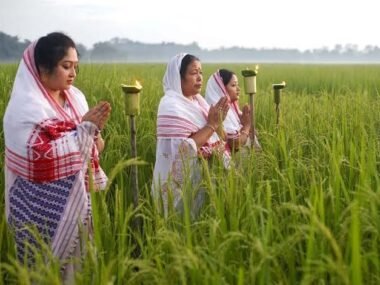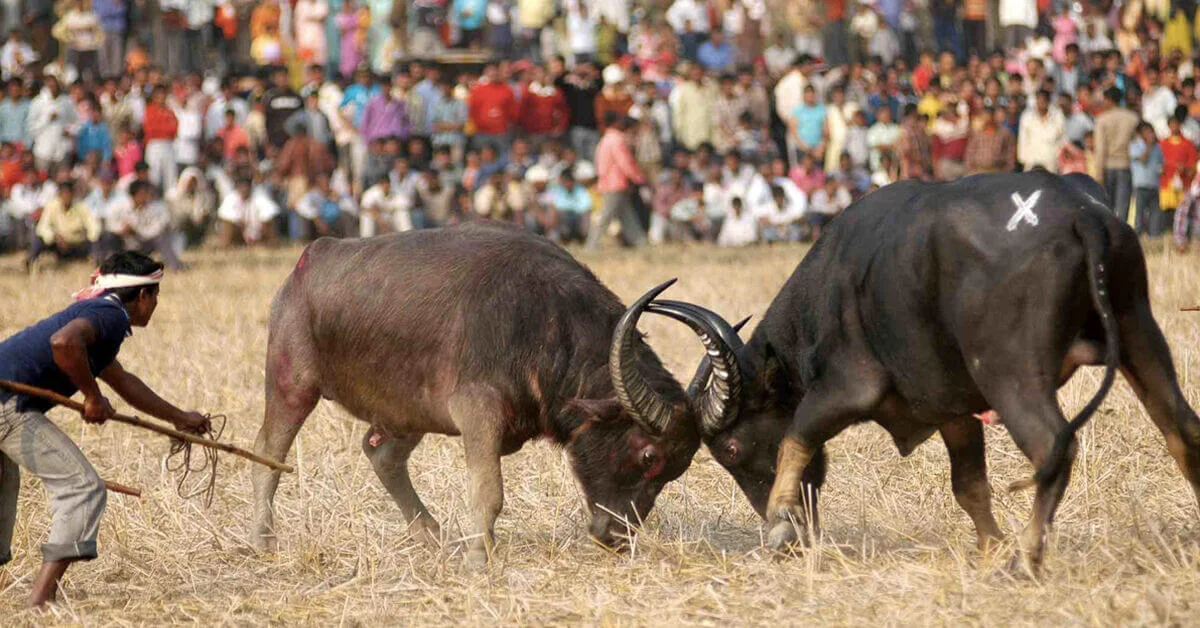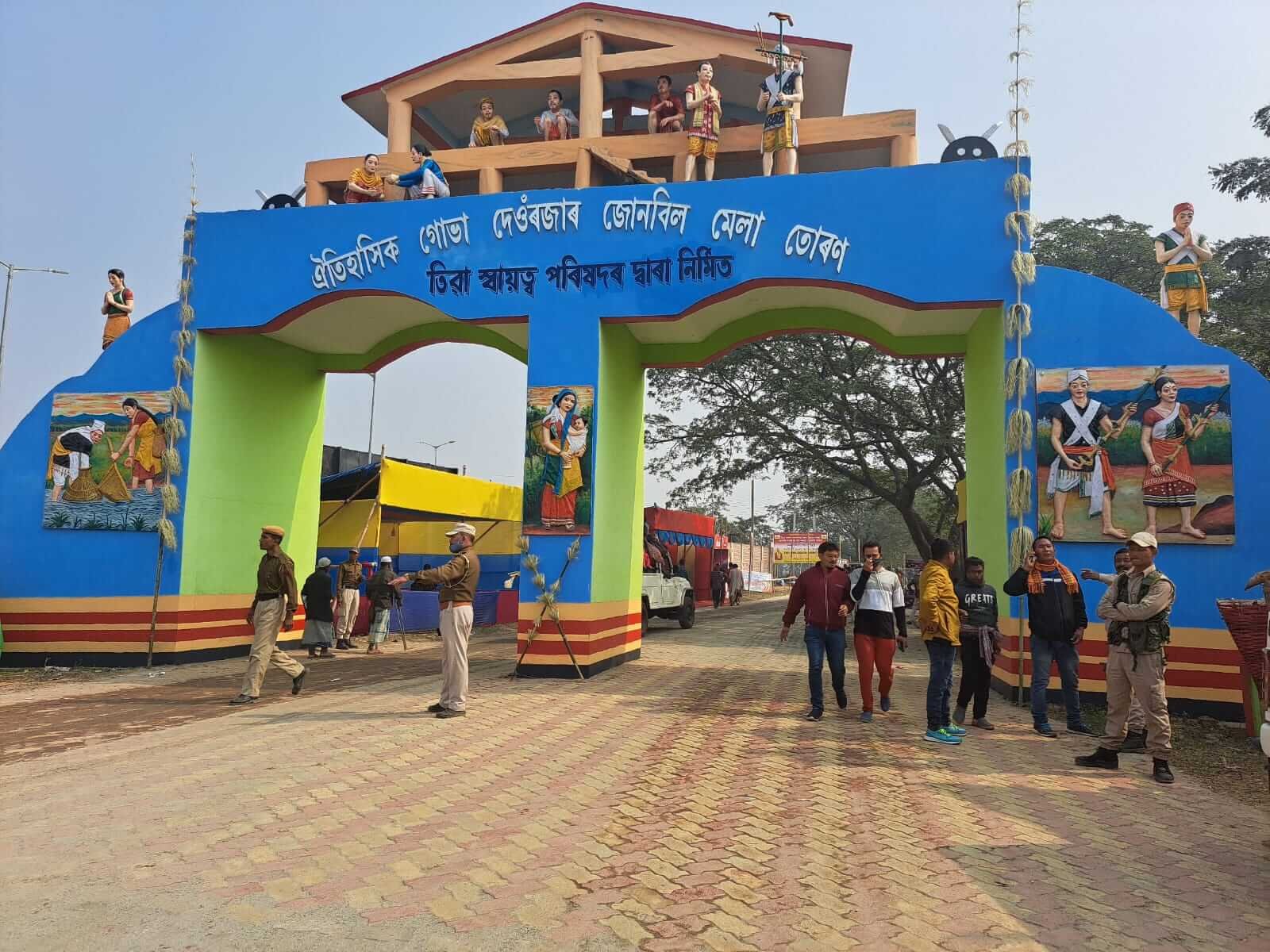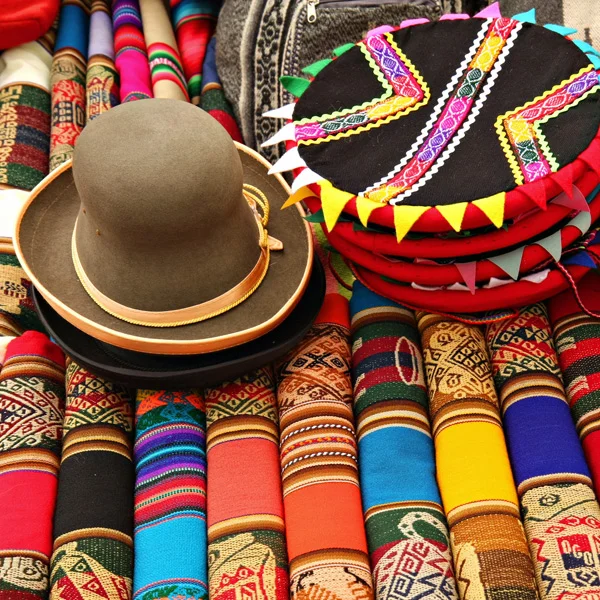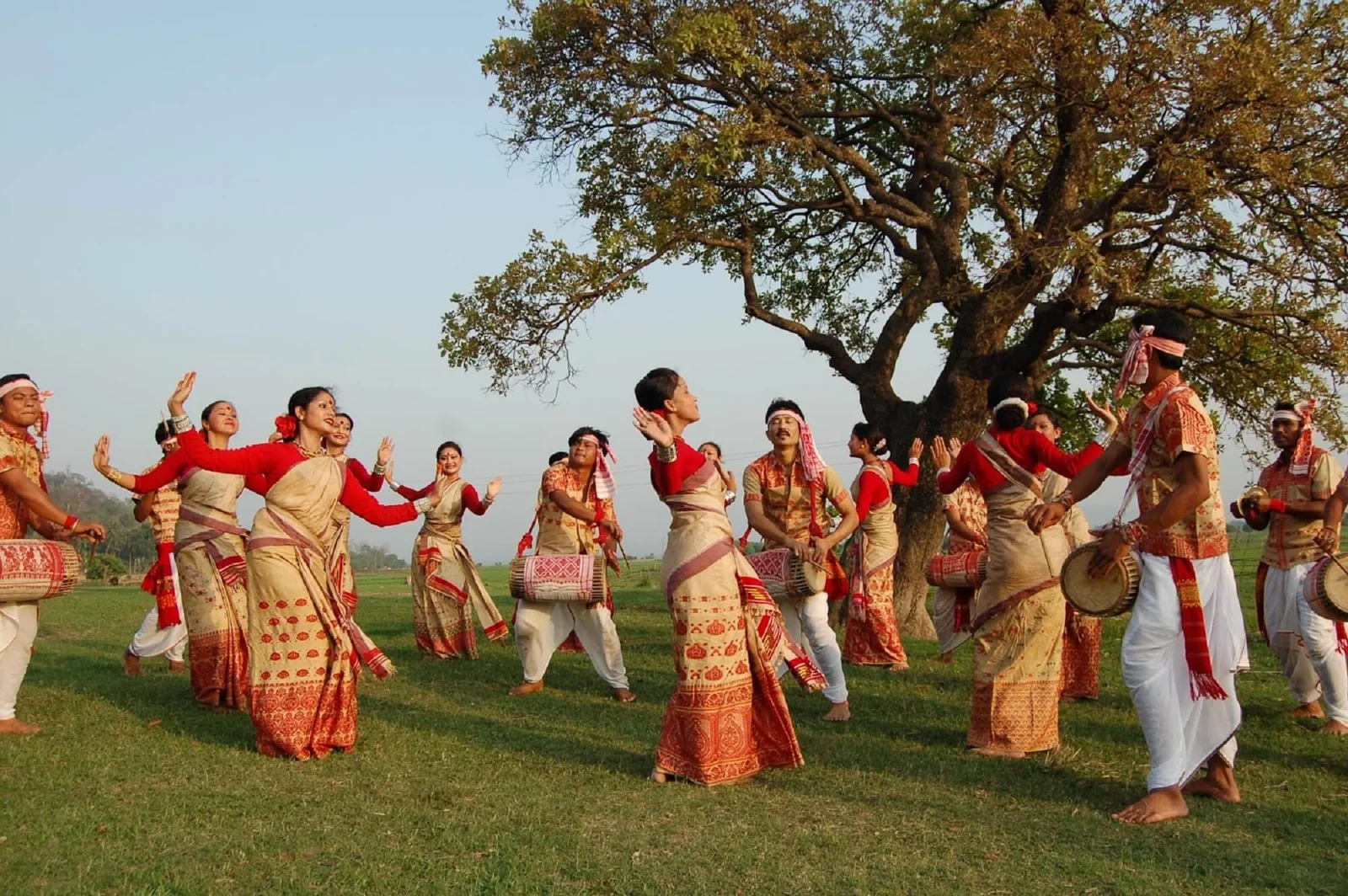Bhaona is a traditional performing art form from Assam, India, known for its strong religious messages. The roots of Assamese drama can be traced back to the early sixteenth century with the works of Mahapurusha Srimanta Sankardeva (1449-1568). He wrote plays that became known as Ankiya Nats, and their performance is called Bhaona. These simple dramas typically depict the triumph of good over evil, often using mythological or fictitious characters like kings, queens, demons, and gods. The plays initially show the apparent victory of evil but ultimately reveal the triumph of good, often with divine intervention.
Sankardeva created Bhaona, writing seven dramas (Ankiya Nats) himself. The first Bhaona was “Chihna-yatra,” where Sankardeva played the role of Vishnu. Sankardeva’s religious school, Eksaran Bhagawati Dharma, meaning devotion to a single God, heavily influenced Bhaona. He traveled extensively to Hindu holy places, drawing inspiration from various cultural and religious traditions to develop Bhaona. His followers, including the renowned disciple Madhabdeva, also contributed by writing numerous dramas for Bhaona. Many anonymous hand-written dramas also exist.
The term ‘Ankiya Nat’ translates to “one-act play.” These plays include an orchestra of singers (Gaayan) and instrumentalists (Baayans) and actors in glittering costumes representing various characters like kings, queens, demons, and animals. The performance begins with the actors passing through an archway of lights called ‘Agni Garh.’ The Sutradhar, who narrates the play, acts as a chorus, explaining the story with the help of the orchestra to make it easier for the audience to understand. The play starts in the morning with singing and dancing, followed by the Sutradhar reciting a verse and presenting a song after paying respects to the deity.
In Bhaona, real men and women portray the characters, speaking dialogues in Brajawali, a lyrical language created by Sankardeva. This language was chosen because Sanskrit, the language of Hindu religious texts, was difficult for common people to understand. Today, Bhaona is often performed in spoken Assamese, especially in Upper Assam. The characters engage in staged battles using ancient weapons like bows, arrows, and swords. The drama unfolds in the open space of a Namghar, a creation of Sankardeva, with the audience seated on three sides and the area towards the Manikut (a shrine) kept open. The Sutradhar, dressed in special attire, connects different parts of the drama with lyrical songs. In modern times, Bhaona is sometimes performed on raised stages, and the day before the performance, known as Ganica, is marked by a similar but extended instrumental musical event.
Origins and Significance of Bhaona
- Srimanta Sankardeva:
- Visionary and Reformer: Srimanta Sankardeva, a revered saint-scholar, conceived Bhaona as a powerful medium for social and religious reform.
- Multilingual Plays: His plays, written in both Assamese and Brajavali languages, continue to resonate with audiences, conveying timeless messages.
- Ankiya Nats:
- Heart of Bhaona: These one-act plays are the essence of Bhaona.
- Themes and Sources: Ankiya Nats explores mythological themes, historical events, and moral lessons. They often draw inspiration from epics like the Mahabharata and Ramayana.
- Xatras and Namghars:
- Sacred Stages: Bhaona finds its stage in Xatras (monastic institutions) and Namghars (community prayer halls) across Assam.
- Preserving Heritage: Vibrant Bhaona performances celebrate the teachings of Sankardeva, preserving Assamese customs and cultural heritage.
Key Elements of Bhaona
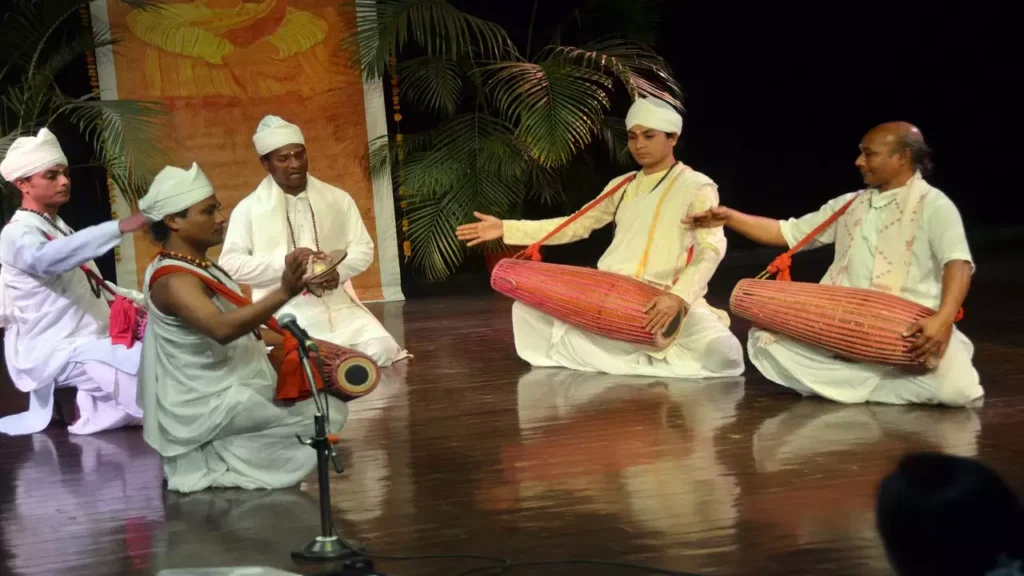
- Sutradhar or Sutradhari:
- The Sutradhar plays a central role in Bhaona.
- They recite slokas, sing, dance, and provide explanations throughout the performance.
- Their presence bridges the spiritual and artistic aspects of Bhaona.
- Bhaoriya:
- These actors breathe life into the characters.
- They meticulously follow the script, portraying mythological figures, historical personalities, and moral archetypes.
- Their commitment ensures the authenticity and emotional impact of the play.
- Gayan:
- The singers add depth and emotion to Bhaona.
- Through melodious renditions, they evoke feelings of devotion, love, and drama.
- Their voices resonate with the audience, enhancing the overall experience.
- Bayan:
- Musicians accompany the entire performance.
- Instruments like khol (drum) and Taal (cymbals) create rhythm and atmosphere.
- Bayan enriches Bhaona, making it a multisensory delight.
Types of Bhaona
- Baresahariya Bhaona:
- Elaborate Productions: Baresahariya Bhaona involves intricate costumes, detailed sets, and multiple acts.
- Grand Performances: These plays are a visual spectacle, captivating audiences with their richness and complexity.
- Mukha Bhaona:
- Condensed Versions: Mukha Bhaona focuses on essential scenes and messages.
- Intense Impact: Despite its brevity, Mukha Bhaona conveys powerful emotions and moral lessons.
- Buka Bhaona:
- Festival Performances: Buka Bhaona is staged during festivals and special occasions.
- Engaging and Accessible: These shorter plays effectively connect with the audience, celebrating cultural traditions.
Majuli: The Heart of Bhaona
- The World’s Largest River Island:
- Location: Majuli lies in the Brahmaputra River, Assam, India.
- Serene Landscapes: Majuli’s natural beauty—lush greenery, water bodies, and migratory birds—sets the stage for Bhaona.
- Spiritual Significance:
- Xatras: Majuli hosts ancient Xatras (monastic institutions) where Bhaona thrives.
- Devotion: Pilgrims and artists gather here, immersing themselves in Bhaona’s spiritual essence.
- Preserving Tradition:
- Cultural Hub: Majuli nurtures Bhaona, keeping it alive through generations.
- Community Bonding: Locals actively participate, passing down customs and stories.
Conclusion
Bhaona isn’t just a play; it’s a bridge connecting generations, preserving Assam’s cultural heritage. As the actors sway to the rhythm of ancient verses, they carry forward the legacy of Sankardeva—a legacy that transcends time and touches the soul. So, next time you witness a Bhaona, remember that you’re part of something profound—a living tapestry of spirituality, tradition, and love for humanity.
FAQ’s
Q. What is Bhaona?
A: Bhaona is a traditional performing art form from Assam, India, that combines drama, music, and dance. It is known for its religious themes and messages, often depicting the victory of good over evil through mythological or fictitious characters.
Q. Who created Bhaona?
Bhaona was created by Mahapurusha Srimanta Sankardeva (1449-1568), a prominent spiritual leader, playwright, and reformer in Assam. He wrote several plays known as Ankiya Nats, which form the foundation of Bhaona.
Q. What is the significance of the Namghar in Bhaona performances?
A: The Namghar, an open house with a shrine (Manikut), is where Bhaona is traditionally performed. It serves as both a religious and cultural center, with the open space used for the drama and the audience seated around it.



